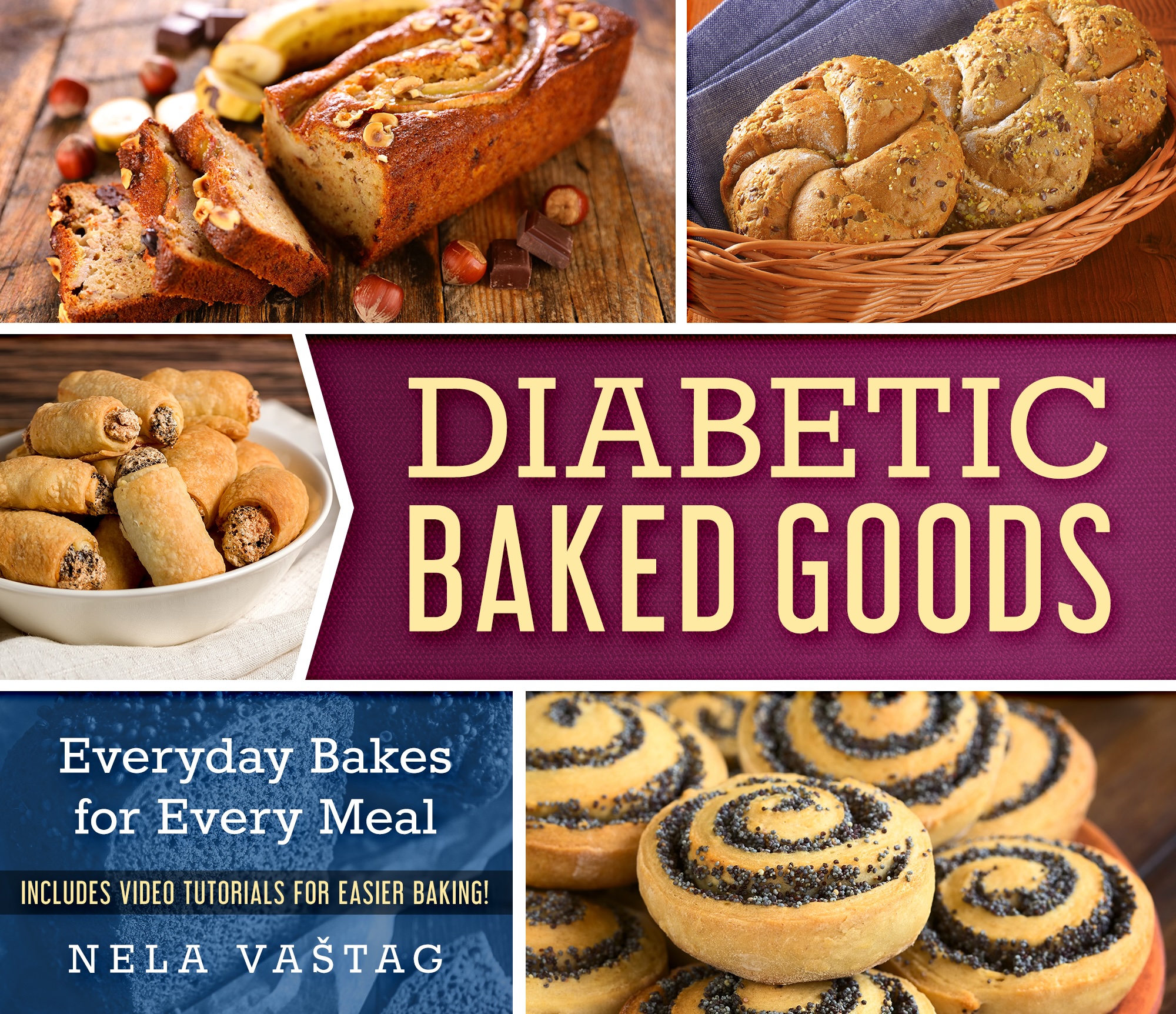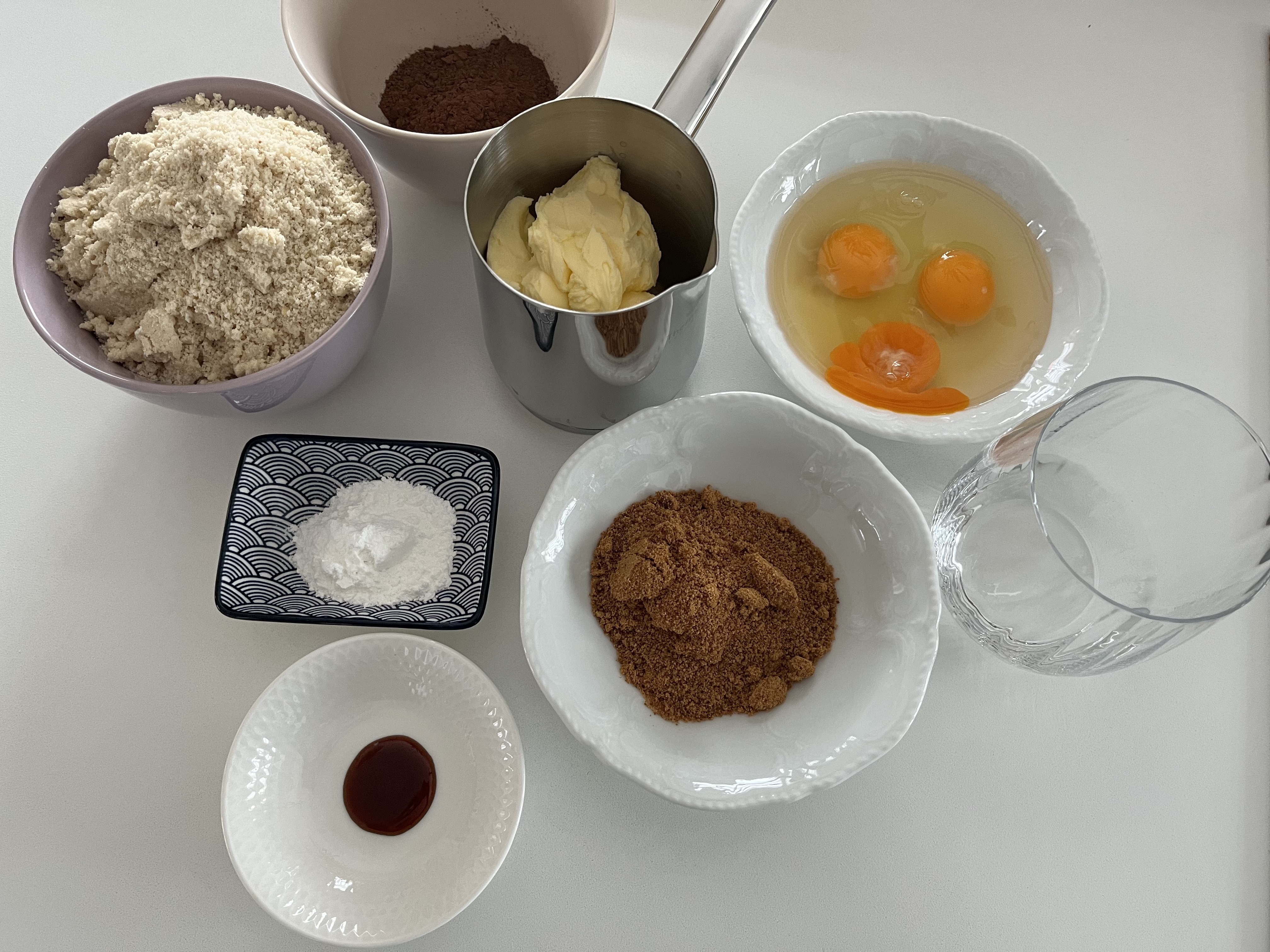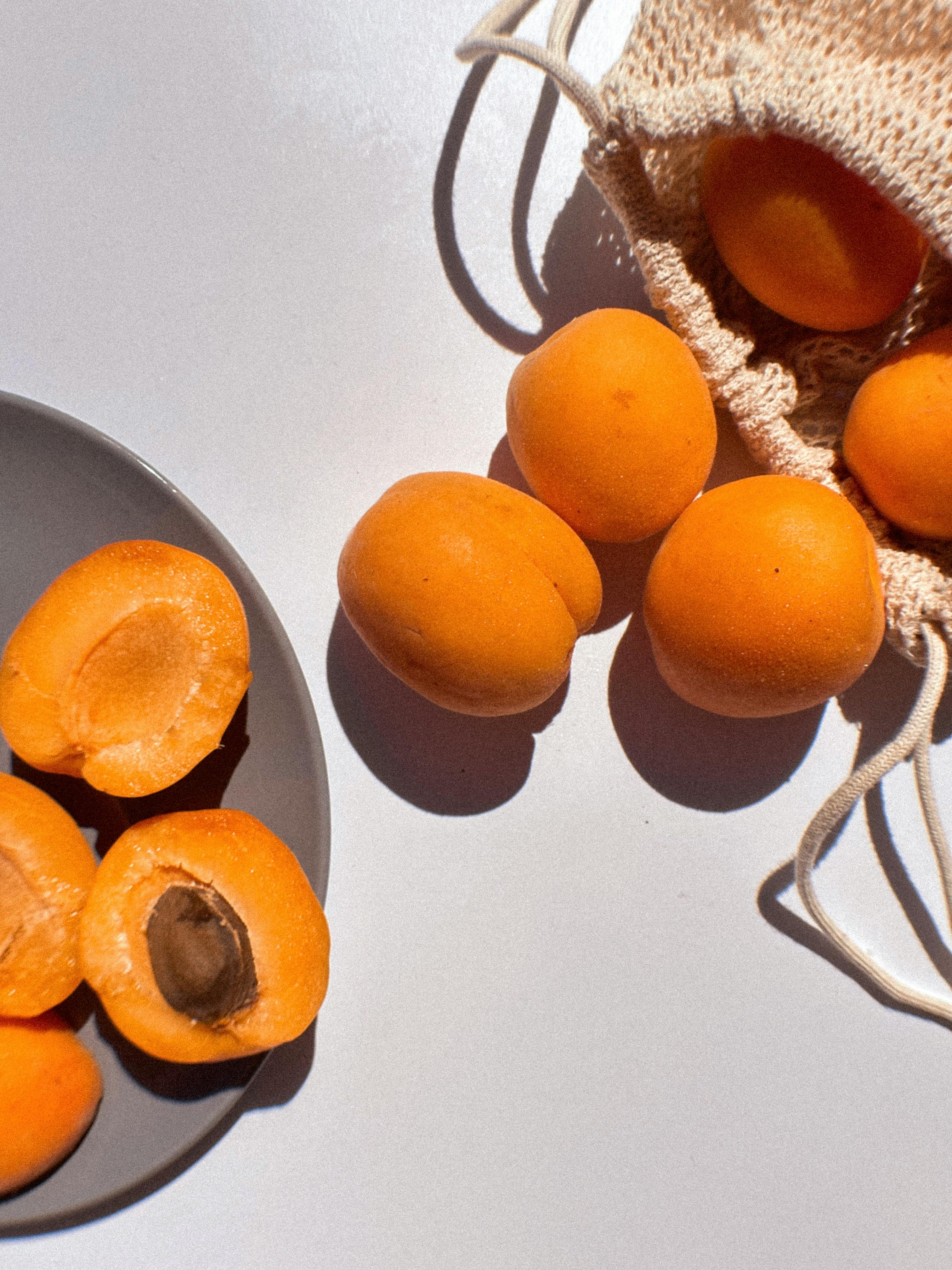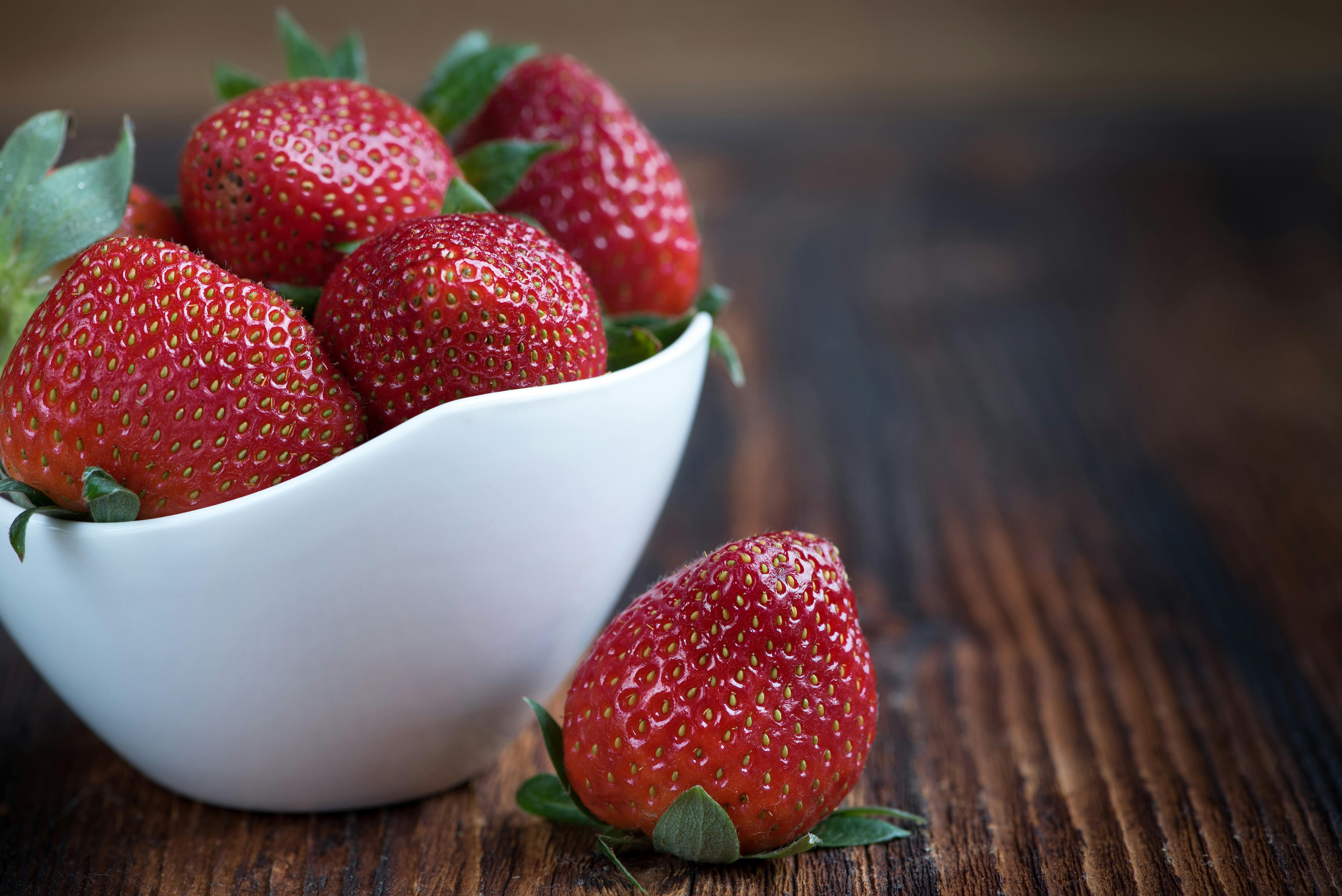 |
Nature’s Dessert Cookbook: Healthy, Delicious & Naturally Sweet Recipes Don’t want or can’t tolerate sugar alcohols and artificial sweeteners? This cookbook is for you! Every dessert is naturally sweetened with whole ingredients rich in fiber and protein, slowing sugar absorption and making them diabetic-friendly. It gathers your favorite recipes from the website—plus brand-new ones—all in one convenient place. Indulge in truly natural treats without compromise! |
 |
Diabetic Baked Goods: Everyday Bakes for Every Meal Diabetic cookbook designed to make healthy baking simple, accessible, and enjoyable. This collection of low-carb, high-fiber, and protein-rich recipes provides a reliable solution for those looking to enjoy diabetic bread and baked goods without blood sugar spikes. Every recipe includes a video tutorial, making it even easier to follow along and bake with confidence! |
 |
What Makes This Cookbook Different?
|
Good Desserts for Diabetics: Impact of Fats and Additives
Living with diabetes or managing the dietary needs of a loved one with the condition involves careful consideration of the foods you consume. One prime concern for people impacted by diabetes is the ingredients in the desserts they enjoy, specifically fats and additives impact on blood sugar levels.
If you're seeking good desserts for diabetics, understanding the role of fats and additives in the diet becomes crucial. Dietary fats do not directly raise blood sugar levels like carbohydrates do. However, they can have an indirect effect on blood sugar control.
The Impact of Fat on Glycemic Control
In a meal or snack, fats can slow down the absorption of carbohydrates, thus slowing the rise in blood sugar levels after eating. This may sound beneficial, but in fact, it can lead to blood sugar peaks at times when insulin activity may be low, leading to poor glycemic control.1
This confirms my experience in managing my son's blood sugar levels. Foods high in fat—whether it's butter with over 80% milk fat, fried foods that absorb a lot of oil, or any other meal high in fat, even when using nutritionally beneficial fats like olive oil—truly disrupt blood sugar regulation.2
Healthy fats are essential, and living in a Mediterranean country, olive oil is a staple in almost every main meal we prepare. However, our experience shows that finding the right balance, particularly in the amount of oil included in our meals, is crucial. In our case, we've found that better glycemic control is achieved by consuming smaller amounts of good fats multiple times a day rather than a larger amount in one meal.
I sometimes come across recommendations to replace fats in a dessert or other meal with olive oil due to its nutritional value. In my experience, this is not good advice. Yes, olive oil is nutritionally excellent, but we must ask what the benefit is if, on the other hand, because of inordinate amount, it causes blood sugar fluctuations, unwanted spikes, and ultimately leads to worse HbA1c level, which can significantly impact long-term health.

When aiming to reduce the impact of fats on blood sugar levels, it's important to choose not only healthier fats but also to manage their quantity. Foods rich in monounsaturated fats, such as olive oil, avocado, and nuts, can help improve blood glucose levels and reduce the risk of heart disease. A good diabetic-friendly dessert takes this into account, carefully balancing both the type and amount of fats used.
Of course, it's important to keep in mind that the same amount of olive oil and, for example, cocoa butter won't have the same impact on blood sugar levels. Determining the right amount requires careful monitoring of blood sugar after consumption, as well as the individual experience each person will develop over time.
Similarly, omega-3 fatty acids, found in fatty fish, chia seeds, and flax seeds, also have a positive effect on overall health and can improve blood sugar control in the long run.
Trans fats, on the other hand, should be avoided. They are unhealthy fats that raise bad cholesterol levels while lowering good cholesterol levels. They are found in processed foods, including some desserts.
Delicious and Healthy Dessert Ingredients
I have positive experiences with:
- Whipped cream: Offers a touch of indulgence, but choose a sugar-free variety.
- Dark chocolate: Opt for varieties with at least 70% cocoa for the best health benefits.
- Greek yogurt: Greek yogurt has twice the protein of regular yogurt and less sugar, making it a great base for a dessert.
- Nuts: Add some nuts for healthy fats and extra crunch.
- Low-fat butter: Much better choice than regular butter and is suitable for a wide variety of desserts. Additionally, low-fat butter contains fewer calories and unhealthy fats.
- Cocoa butter: Known for its smooth texture and rich chocolate aroma. Contains healthy fats that support heart health.
These nut butters are valued for their taste, nutritional profile, and versatility in cooking, making them valuable additions to a balanced diet and substitutions for fats.
- Peanut Butter: A popular source of plant-based protein. High in monounsaturated fats, which are beneficial for heart health.
- Pistachio Butter: Offers a unique, nutty flavor profile. Rich in protein, fiber, and essential nutrients. Supports satiety and may aid in weight management when consumed in moderation.
- Other Nut Butters: Almond and cashew butters provide similar benefits to peanut butter.They are packed with vitamins, minerals, and antioxidants. Can be incorporated into various recipes or enjoyed as a spread for a nutritious snack.
Managing blood sugar levels while enjoying life's sweet pleasures doesn't mean you have to compromise on taste. Aim for balance and moderation in consuming fats and watch out for hidden sugars in your food additives.
Let's Tackle Additives
Next, we'll tackle additives. These are substances added to foods to improve their flavor, texture, color, or to prolong their shelf life. Like fats, some additives can indirectly affect blood sugar levels.
Some artificial sweeteners like aspartame, saccharin, or sucralose are often used in "sugar-free" or "no sugar added" desserts. While they don't contribute to carbohydrates and don't directly affect blood sugar levels, research suggests they may increase your desire for other sweet foods and lead to overeating, resulting in poor glycemic control.
High fructose corn syrup, an additive often found in baked goods, can also increase blood sugar levels. Even if the dessert is marketed as 'low fat', it may still contain high amounts of sugar, leading to elevated glucose levels.
Therefore, when choosing dessert ingredients, it's essential to look beyond the front of the product label. Consider the full list of ingredients, including the type of fats and what additives are included.
Additives in Bread: Our Experience
I'd like to share our experience with additives in bread.
We eat bread in very small amounts, and I used to bake homemade bread for our needs.
Just a few months after Lovre was diagnosed with diabetes, we were on a Croatian island, and I hadn’t brought any bread because there was so much I still didn’t know. We bought bread from a local vendor, thinking it wouldn’t matter much since our family doesn’t consume large amounts of bread. However, Lovre needed an unusually high dose of insulin to bring his blood sugar down, even slightly. I couldn’t figure out what I was doing wrong until I connected the dots with another event.
There was one time when we didn’t have any bread at home but still wanted some. At the store, I carefully considered which bread to choose and decided on one that prominently claimed to be additive-free. It turned out to be an excellent choice for my son, especially since it wasn’t 'whole grain' for once, and we all enjoyed the taste.
Since then, we have exclusively chosen additive-free bread, even during our travels—of course, when we were in countries where it was available. We haven’t experienced any blood sugar fluctuations or spikes due to bread.
I believe I don't even need to emphasize that the amount of bread Lovre and all of us eat is still very moderate, and that this is also important.
In conclusion, the choices we make in our diet go a long way in managing diabetes. While it may seem daunting initially, with understanding and the right knowledge, we can make more informed, healthier choices.
Here's hoping this guide has given you valuable insights about the impact of fats and additives on blood sugar level. Knowledge is empowerment, and you are catered with the power to make the best dietary choices.



